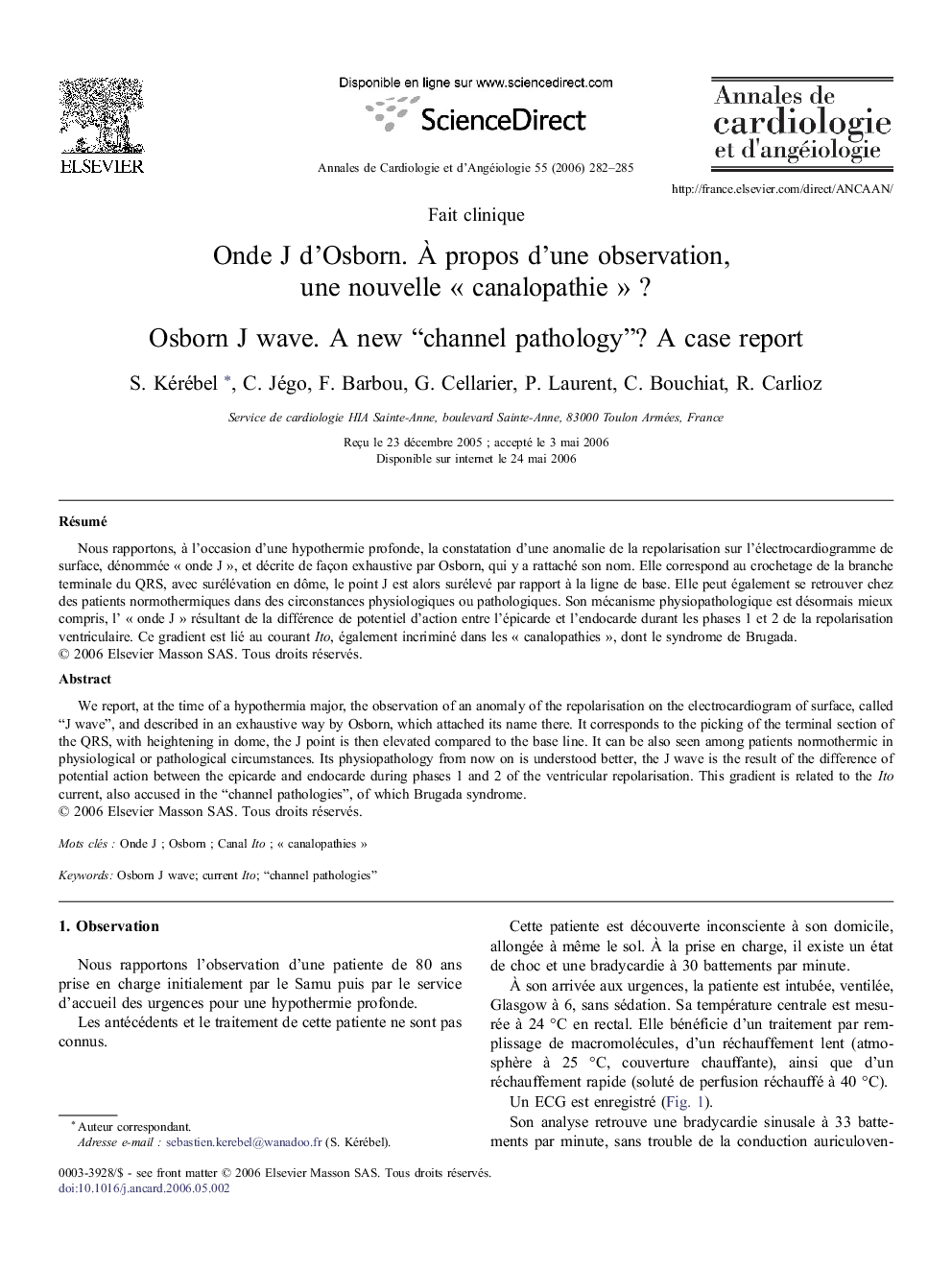| Article ID | Journal | Published Year | Pages | File Type |
|---|---|---|---|---|
| 2869701 | Annales de Cardiologie et d'Angéiologie | 2006 | 4 Pages |
RésuméNous rapportons, à l'occasion d'une hypothermie profonde, la constatation d'une anomalie de la repolarisation sur l'électrocardiogramme de surface, dénommée « onde J », et décrite de façon exhaustive par Osborn, qui y a rattaché son nom. Elle correspond au crochetage de la branche terminale du QRS, avec surélévation en dôme, le point J est alors surélevé par rapport à la ligne de base. Elle peut également se retrouver chez des patients normothermiques dans des circonstances physiologiques ou pathologiques. Son mécanisme physiopathologique est désormais mieux compris, l' « onde J » résultant de la différence de potentiel d'action entre l'épicarde et l'endocarde durant les phases 1 et 2 de la repolarisation ventriculaire. Ce gradient est lié au courant Ito, également incriminé dans les « canalopathies », dont le syndrome de Brugada.
We report, at the time of a hypothermia major, the observation of an anomaly of the repolarisation on the electrocardiogram of surface, called “J wave”, and described in an exhaustive way by Osborn, which attached its name there. It corresponds to the picking of the terminal section of the QRS, with heightening in dome, the J point is then elevated compared to the base line. It can be also seen among patients normothermic in physiological or pathological circumstances. Its physiopathology from now on is understood better, the J wave is the result of the difference of potential action between the epicarde and endocarde during phases 1 and 2 of the ventricular repolarisation. This gradient is related to the Ito current, also accused in the “channel pathologies”, of which Brugada syndrome.
